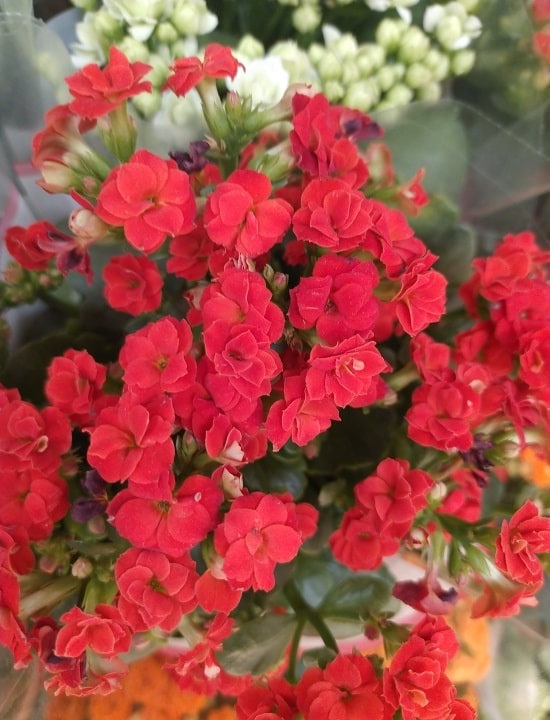If you want to grow the Kalanchoe flower in your homes, you need to be careful not to overdo anything. The Kalanchoe does not like too much sun or too much water. It needs to be in a sunny place in winter and in the shade in summer. The ideal temperature for growing indoors is between 10-12 degrees. It is necessary to wait for the soil to dry well between two waterings. Since it does not need moisture, it is easier to care for than other potted plants. Too much cold and too much heat will damage the leaves and roots. It is easily affected by air currents and drafts. For this reason, it should not be kept in front of windows and doors. The Kalanchoe plant does not grow very tall. It is important to remove the fading flowers from the plant so that the plant does not waste its nutrients and can complete its development more comfortably.
When watering Kalanchoe, it’s generally recommended to water the plant from the top. Watering from the top allows the water to reach the root system and saturate the soil evenly. Here are some tips for watering Kalanchoe:

- Watering Technique: Pour water onto the soil around the base of the plant until you see water draining out from the bottom of the pot. This ensures that the entire root ball receives moisture.
- Allow Drainage: Ensure that the pot has drainage holes to allow excess water to escape. Standing water in the saucer or at the bottom of the pot can lead to overwatering and root rot.
- Watering Frequency: Allow the top inch (2.5 cm) of the soil to dry out before watering again. Kalanchoes are succulents and prefer a well-draining soil that dries between waterings. The frequency of watering can vary depending on factors such as the climate, temperature, and the specific needs of your plant.
- Avoid Overwatering: Overwatering is a common issue with Kalanchoe plants. Be cautious not to keep the soil consistently soggy, as this can lead to root rot. It’s better to let the soil dry out slightly between waterings.
While watering from the top is the standard method, some gardeners also practice bottom watering, especially for plants in containers. Bottom watering involves placing the pot in a tray of water and allowing the soil to absorb moisture from the bottom up. However, this method may not be as effective for succulents like Kalanchoe, as they prefer a thorough soaking of the soil.
In summary, for Kalanchoe, it’s generally recommended to water from the top, ensuring that the water reaches the roots and allowing excess water to drain away. Adjust the frequency of watering based on the specific needs of your plant and the environmental conditions in your location.
Do kalanchoe need direct sunlight?
Kalanchoe plants prefer bright, indirect light, but they can also tolerate some direct sunlight. In their natural habitat, many Kalanchoe species grow in semi-arid regions with plenty of sunlight. When grown indoors, providing them with bright, filtered light or placing them near a sunny window is generally ideal.
Here are some guidelines for providing the right amount of light for your Kalanchoe:
- Indirect Light: Place your Kalanchoe where it receives bright, indirect light for most of the day. This could be near a south or west-facing window, but you might want to avoid placing them in intense, direct sunlight for extended periods, especially during the hottest part of the day.
- Filtered Light: If you are concerned about the intensity of direct sunlight, consider providing filtered light. You can achieve this by placing sheer curtains or using other methods to diffuse the sunlight.
- Adaptation to Sunlight: Kalanchoes can adapt to different light conditions, but sudden changes in light exposure can stress the plant. If you’re moving your Kalanchoe to a spot with more direct sunlight, do so gradually to allow the plant to acclimate.
- Outdoors: If you are growing Kalanchoe outdoors in a garden or on a balcony, they can usually tolerate more direct sunlight, especially in mild or cooler climates. However, in hot and arid regions, some protection from intense afternoon sun may be beneficial.
Keep in mind that the specific lighting requirements can vary slightly between different species of Kalanchoe, so it’s a good idea to observe your plant and adjust its placement based on how it responds to light conditions. If the leaves are turning yellow or becoming scorched, it may indicate that the plant is receiving too much direct sunlight, and you may need to move it to a slightly shadier location. Conversely, if the plant becomes leggy and stretched, it might be an indication that it needs more light.
